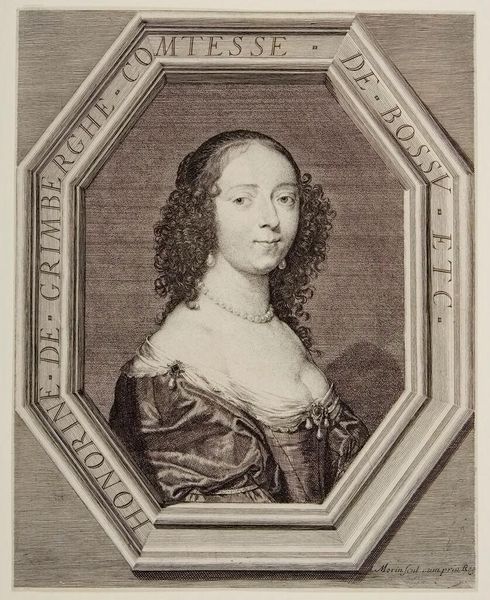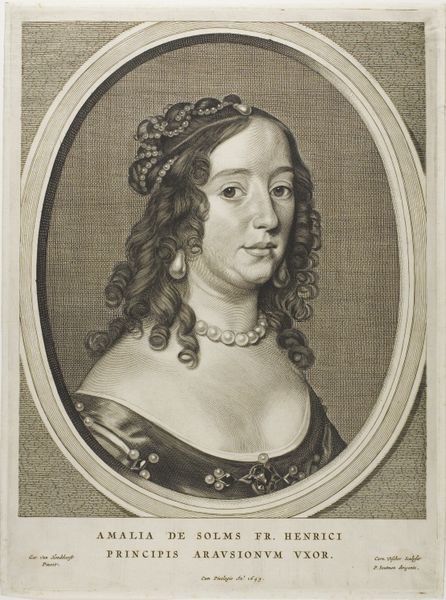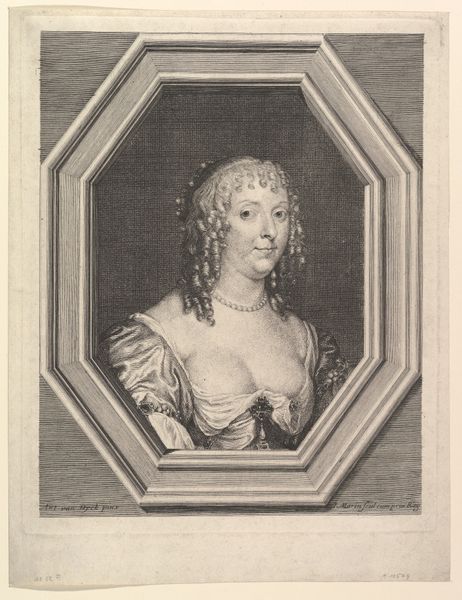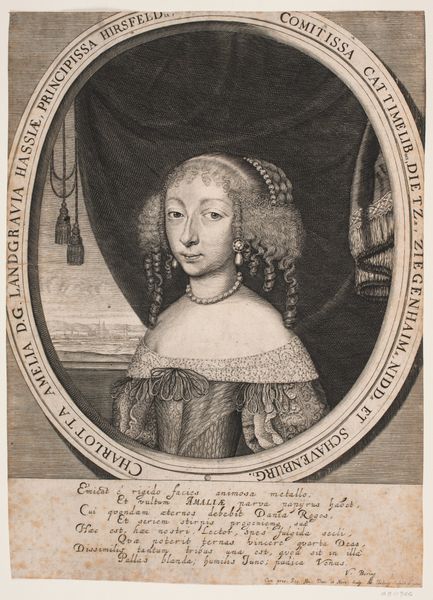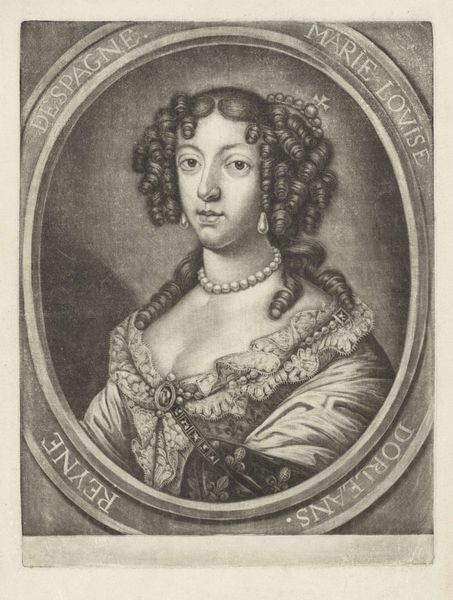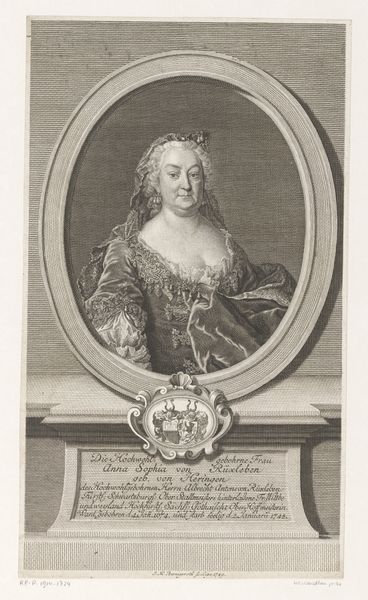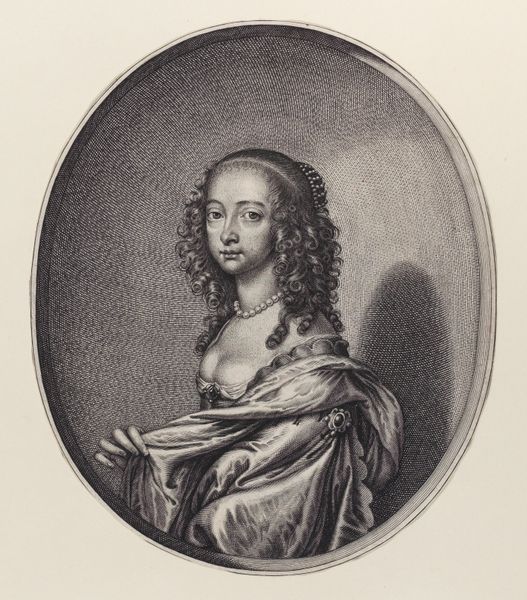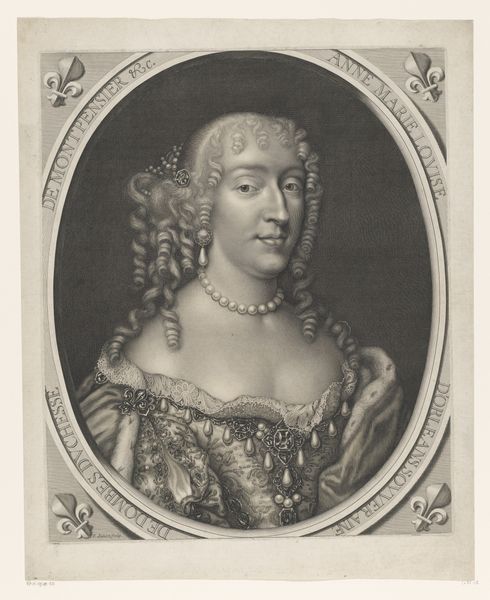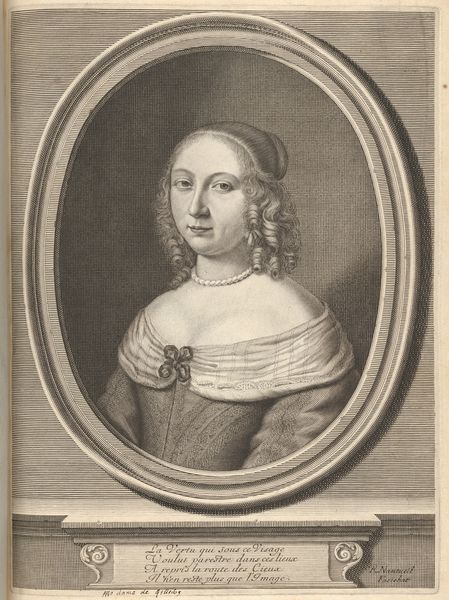
drawing, print, etching, engraving
#
portrait
#
drawing
#
baroque
# print
#
etching
#
figuration
#
portrait reference
#
line
#
engraving
Dimensions: image: 11 3/4 x 9 7/16 in. (29.8 x 24 cm), trimmed to image
Copyright: Public Domain
Editor: This is "Honorine de Grimberghe, comtesse du Bossu," an engraving and etching by Jean Morin, dating somewhere between 1605 and 1650. The detail is incredible. What statements about gender, identity, or power do you believe it’s trying to make? Curator: Well, let’s consider the historical context. Seventeenth-century portraiture, particularly of women, was deeply intertwined with social standing and power dynamics. Note the details in Honorine’s clothing – the pearls, the fabric, the elaborate coiffure. These aren't just decorative elements; they signify wealth and belonging to an elite class. Editor: So, it's about broadcasting status. But is there something deeper? Curator: Precisely. Think about how women, especially noblewomen, were often portrayed. Their identities were frequently tied to their marital status and lineage. Do you notice any visual cues that point to her individual identity beyond her title? Editor: Perhaps her gaze? She seems self-assured, like she knows her worth isn't only tied to her husband or family. Curator: Exactly! Consider also the agency inherent in commissioning such a portrait. Honorine, in participating in this representation, actively shaped her own narrative within the societal constraints. It’s a negotiation of power, a subtle assertion of individuality within the expected role. Editor: That's fascinating! It shows how even within strict social structures, there was room for expression and, to some extent, resistance. I’ll never see portraits the same way! Curator: Absolutely, it highlights how portraiture provides insight into societal structures and can also suggest ways in which individuals actively negotiate those constraints.
Comments
No comments
Be the first to comment and join the conversation on the ultimate creative platform.
